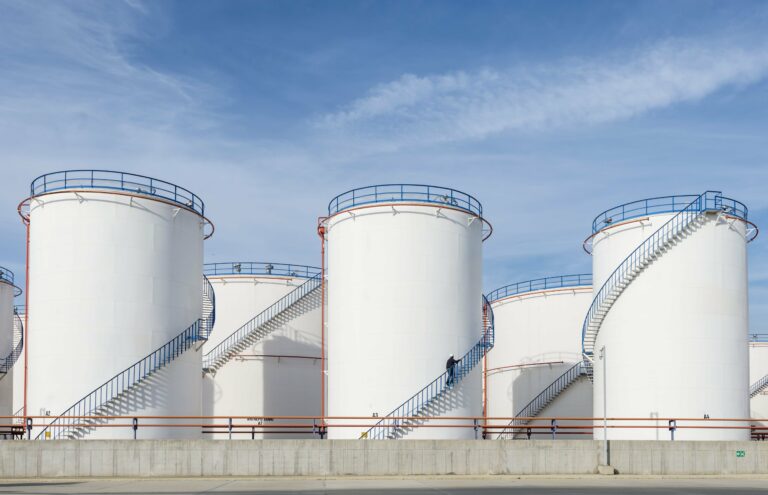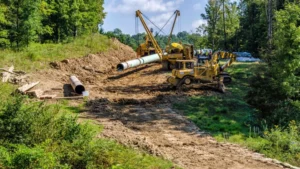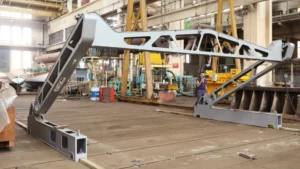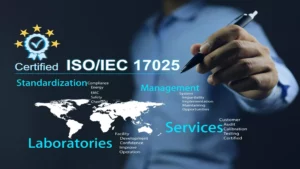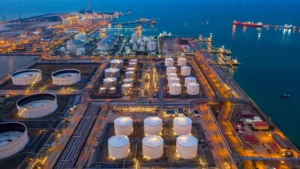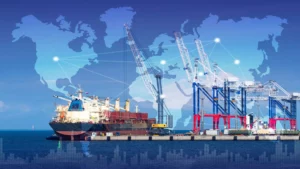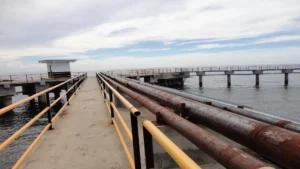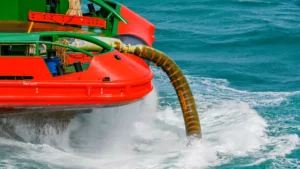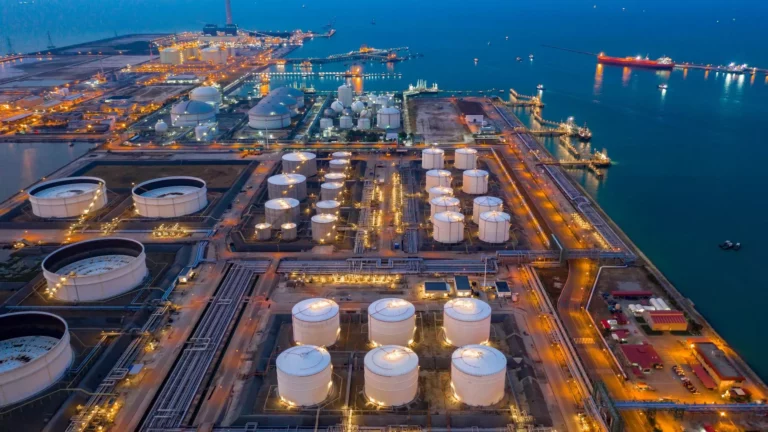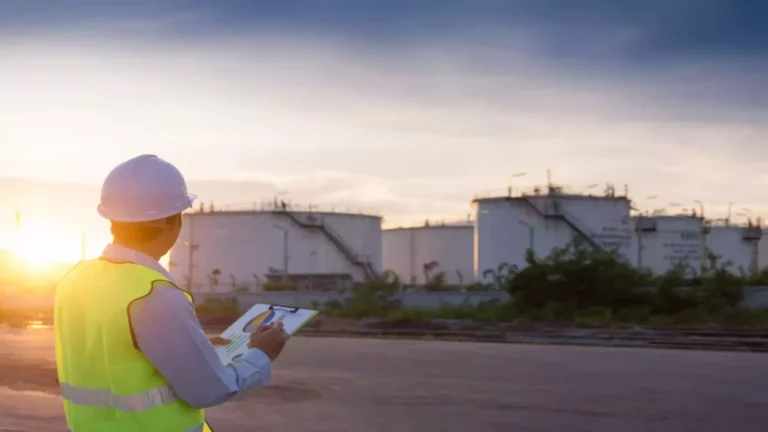Author: Inspector. José G. López M, October 31, 2023.
Storage tanks play an important role in today’s economy. At a global level, the proper functionality of these tanks is essential, their application is broad and covers various industries. Because of the role they play, preserving the integrity of these tanks is of great value.
There are different advanced monitoring methods to identify leaks in oil storage tanks, including digital controllers and specialized sensors. This technology allows detection in real time, providing precise and reliable results.
These comprehensive leak detection systems offer complete solutions for petroleum distribution and fuel stations, using a variety of sensors and software to detect leaks and monitor tank levels, as well as changes in liquid level that could indicate the presence of a leak.
These containers can exhibit a variety of configurations and dimensions, both buried and above ground, and are used for the storage of a wide variety of materials. The storage capacity of a tank can range from hundreds to millions of gallons, and its use covers a surprising diversity of products.
Reliable leak detection
Maintaining a low level of risk when storing or transporting dangerous substances is essential. Corrosion of tanks can lead to pollution and deterioration of the environmental environment. Therefore, it is necessary to ensure the safety and reliability of deposits, which highlights the importance of carrying out inspections using advanced techniques, which include:
1. Continuous monitoring systems: Using sensors and data acquisition systems to provide real-time data on tank conditions, including pressure, temperature, and fluid levels. Any anomaly can generate alerts.
2. Ultrasonic tests: They allow changes in the thickness of the tank walls and the presence of leaks to be detected by sending high-frequency sound waves to the tank.
Advanced storage tank leak detection techniques employ a combination of cutting-edge technologies and strategies with the goal of achieving early and accurate leak detection. These techniques are based on scientific principles and use specialized devices to collect and analyze real-time data on tank conditions.
This data is continuously monitored and compared to reference values to identify any anomalies that may indicate the presence of a leak, generating alerts so that corrective action can be taken in a timely manner.
Ultrasonic testing: These sensors use high-frequency sound waves to evaluate the integrity of tank walls. These sensors emit ultrasonic waves that propagate through the tank material and detecting changes in wall thickness or the presence of leaks generate a data record indicating the location and magnitude of the problem.
The combination of continuous monitoring systems and ultrasonic testing provides greater reliability in leak detection, helping to prevent environmental damage and ensure safety in storage facilities.
3. Fiber optic detection: The implementation of monitoring systems using fiber optic cables arranged on the perimeter of the tank facilitates the detection of thermal variations and stresses in the tank wall structures. These optical sensors are sensitive to anomalous alterations that could suggest the existence of a possible leak, which constitutes an advanced structural integrity monitoring strategy.
4. Acoustic Emissions Test: This technique involves the capture and analysis of sound emissions generated by internal stresses in the tank structure. The detection of sounds or any acoustic deviation clarifies the existence of potential leaks or structural problems, this being a fundamental technique in the inspection of mechanical integrity.
5. Remote sensing and satellite images: The use of advanced imaging technologies, from satellites and unmanned aerial vehicles, allows the identification of leaks by recognizing alterations in surface conditions. This technique is suitable in remote inspection of storage terminals and pipelines.
6. Internet of Things (IoT) and data analytics: Leveraging IoT devices and sensors, integrated with advanced data analytics, enables data collection, processing and analysis for leak detection. This approach represents a disruptive evolution in asset management, optimizing monitoring and enabling a proactive response to potential integrity issues in industrial storage.
7. Machine Learning and Artificial Intelligence (AI): The application of this technology constitutes an innovative methodology aimed at continuous data analysis, with the purpose of proactively identifying anomalous patterns or deviations that could indicate the presence of an incipient leak; which translates into a revolution in the timely detection of potential leak scenarios, empowering the industrial inspection industry.
8. Integrated communication and alarm systems: The creation and deployment of highly robust communication and alarm systems represents a considerable component in the management of industrial assets. These systems act as the backbone of real-time monitoring, instantly reporting potential adverse events.
9. Corrosion and materials testing: Early corrosion assessment is based on systematic inspection and periodic testing of materials integrity. These practices are considered essential in the field of industrial inspection, as they ensure the long-term sustainability and reliability of storage tanks.

Storage tank inspection service
MISTRAS is a company that provides its clients with high-quality experience in the inspection, engineering, maintenance, access and data management of storage tanks. Their focus is on preventing corrosion, cracks and leaks in refinery storage tanks, as we recognize this is crucial to ensuring facility productivity, safety and compliance.
Failures in these tanks can carry massive costs and pose a potentially disastrous hazard. Leaks of hazardous gases and liquids pose serious risks to personnel and the environment, especially if flammable materials are involved.
Through advanced assessment techniques and the use of cutting-edge technologies, it aims to provide an accurate and detailed analysis of the condition of tanks, allowing operators to make informed decisions about repairs and preventative maintenance.
It also provides custom, non-intrusive tank inspection services that use intrinsically safe (IS) probe technology to maximize safety and allow owners to assess the condition of their tanks without the need to send technicians to the site. Its in-service IS scanning service is a reliable, safe and environmentally friendly method of performing ultrasonic storage tank wall thickness measurements.
This inspection technique allows owners to postpone a full out-of-service inspection until a more convenient time, reducing costs, downtime and associated lost profits.
The storage tank inspection service plays a crucial role in preserving the safety and integrity of these containers that store critical substances in various industries. The importance of having a specialized inspection service lies in the early detection of possible problems, such as corrosion, leaks or structural damage, which could have a devastating impact on both the environment and the operation of the facilities.
These services employ a variety of advanced techniques to conduct thorough and accurate inspections. From visual assessment to the use of technologies such as ultrasound, radiography and data analysis, a complete assessment of the integrity of the tanks is ensured. This information is essential to make informed decisions about the need for repairs, preventive maintenance or even the removal of tanks in the event of irreparable damage.
The frequency of inspections may vary depending on the type of contents and applicable regulations, but constant attention to the integrity of the tanks is essential. Investing in a high-quality inspection service not only helps prevent potential disasters, but also ensures continuity of operations and environmental protection.
In summary, the storage tank inspection service is a fundamental piece in the responsible management of these critical assets. Early and accurate problem detection contributes to the safety, reliability and sustainability of industrial operations that depend on these tanks.
Risk-based assessment
Proper tank maintenance is essential to comply with regulations, ensure operational availability and prevent leaks. The Risk Based Assessment (RBI) approach has been used by tank operators to achieve these objectives. However, the question arises as to how to determine whether an RBI program establishes optimal intervals for inspections.
The availability and accuracy of inspection data, the appropriateness of testing, and other factors may affect the accuracy of the evaluation. In some cases, there may be an overly conservative approach due to a lack of accurate historical information, while in other cases there may be a lack of conservatism due to unforeseen changes in the environment, among other factors.
Conclusion
Advanced monitoring techniques to detect leaks in storage tanks represent a significant advance in the management and preservation of critical assets. Early and accurate leak detection not only contributes to the safety and integrity of storage systems, but also minimizes the environmental impact and costs associated with undetected incidents.
Bibliographic references
- elsevier.com/books/above-ground-storage-tank-oil-spills
- https://www.mistrasgroup.com/who-we-help/industries/oil-and-gas/midstream/storage/
- www.hgiworld.com/geophysical-services/leak-detection/



